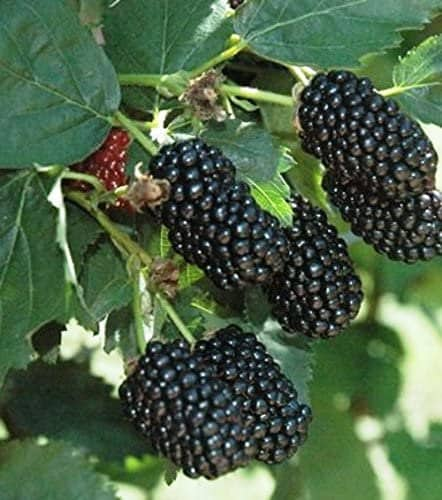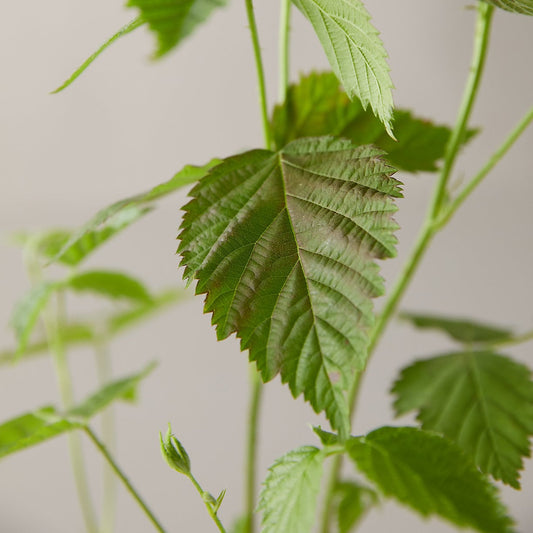A Guide to Growing Big Daddy Blackberries: Sweet Rewards Await
Big Daddy blackberries are making a splash in gardens across the country, celebrated for their oversized, succulent berries and impressive yields. This variety is a dream come true for berry lovers seeking the ultimate in both flavor and productivity. Whether you're aiming to fill your table with delicious, home-grown fruit or looking to add a versatile and productive plant to your garden, Big Daddy blackberries are an excellent choice. This guide will provide you with the essential steps to successfully cultivate Big Daddy blackberries, ensuring a bountiful harvest of these giant, juicy berries.
Understanding Big Daddy Blackberries
Big Daddy blackberries are noted for their large fruit size, exceptional sweetness, and extended harvesting season. Their thornless canes and vigorous growth habit make them a popular choice among gardeners for both their ease of picking and their ornamental value. Suitable for USDA zones 6-9, Big Daddy blackberries are adaptable to a wide range of climates and garden settings.
Selecting the Right Location
1. Sunlight Needs: For optimal growth and fruit production, Big Daddy blackberries require full sun, meaning at least six to eight hours of direct sunlight daily.
2. Soil Requirements: These blackberries prefer well-draining, fertile soil with a slightly acidic to neutral pH (6.0-7.0). Enriching the soil with organic matter before planting can improve plant health and berry quality.
Planting Big Daddy Blackberries
1. Best Time to Plant: Early spring is the ideal time to plant Big Daddy blackberries, after the risk of frost has passed. This timing allows plants to establish themselves ahead of the summer growing season.
2. Planting Process: Dig a hole twice as wide and just as deep as the root ball. Space plants about 5-6 feet apart to allow for adequate air circulation and growth. Mix in compost or aged manure to enrich the soil, then plant the cane, backfilling the hole and watering thoroughly.
Care and Maintenance
1. Watering: Consistent moisture is crucial for Big Daddy blackberries, especially during their first growing season and in periods of drought. Water deeply and regularly to maintain even soil moisture.
2. Mulching: A 2-3 inch layer of organic mulch around the base of the plants can help retain soil moisture, regulate soil temperature, and suppress weed growth. Mulch also contributes organic matter to the soil as it decomposes.
3. Fertilization: Apply a balanced, slow-release fertilizer in early spring to promote healthy growth. Consider a second application after the initial fruit set to encourage a robust harvest.
4. Pruning: Prune Big Daddy blackberries in late winter or early spring to remove any dead or diseased canes and to thin the plants. This encourages healthy growth, air circulation, and fruit production.
Harvesting Big Daddy Blackberries
Big Daddy blackberries typically ripen in mid to late summer. The berries are ready for harvest when they turn deep black and can be easily pulled from the plant. Harvesting in the morning when temperatures are cooler can result in firmer berries that store better.
Overcoming Challenges
While Big Daddy blackberries are relatively disease-resistant and hardy, they can still face challenges such as pests and environmental stressors. Regular monitoring and adopting integrated pest management practices can help keep your plants healthy and productive.
Conclusion
Growing Big Daddy blackberries is an exciting venture that rewards gardeners with an abundance of large, sweet berries perfect for a variety of uses. By following these guidelines and providing the right care, you can enjoy the bountiful harvests of Big Daddy blackberries in your garden, adding both flavor and beauty to your outdoor space. Whether you're an experienced gardener or a novice eager to try your hand at berry cultivation, Big Daddy blackberries offer a fruitful and satisfying experience.







